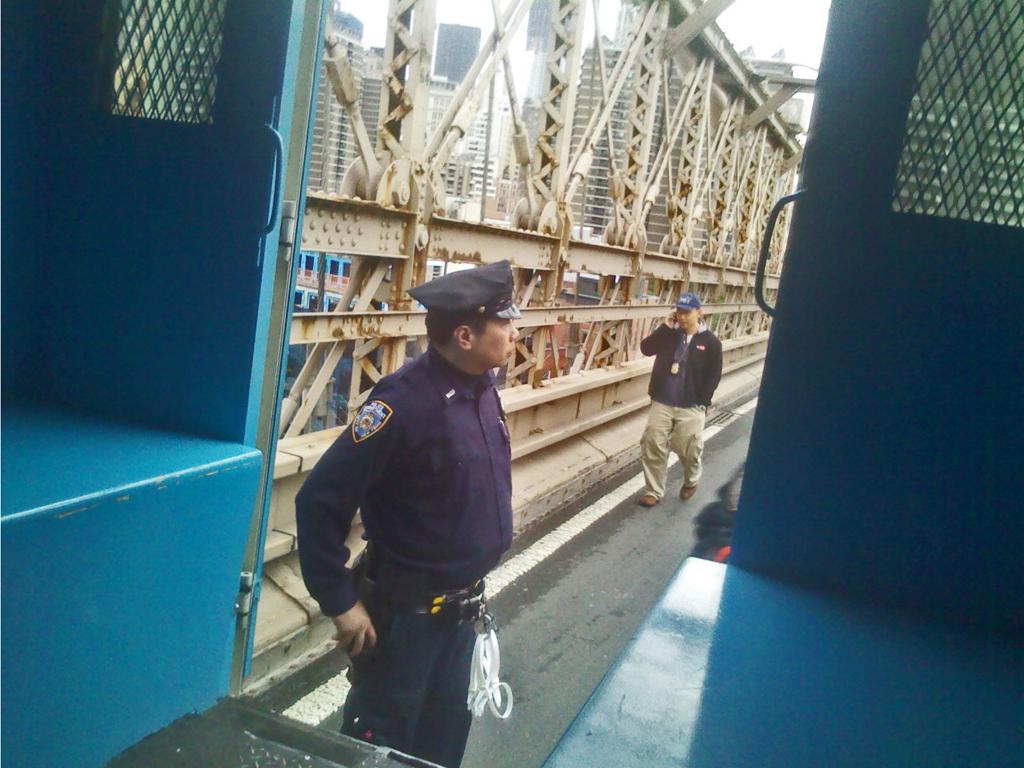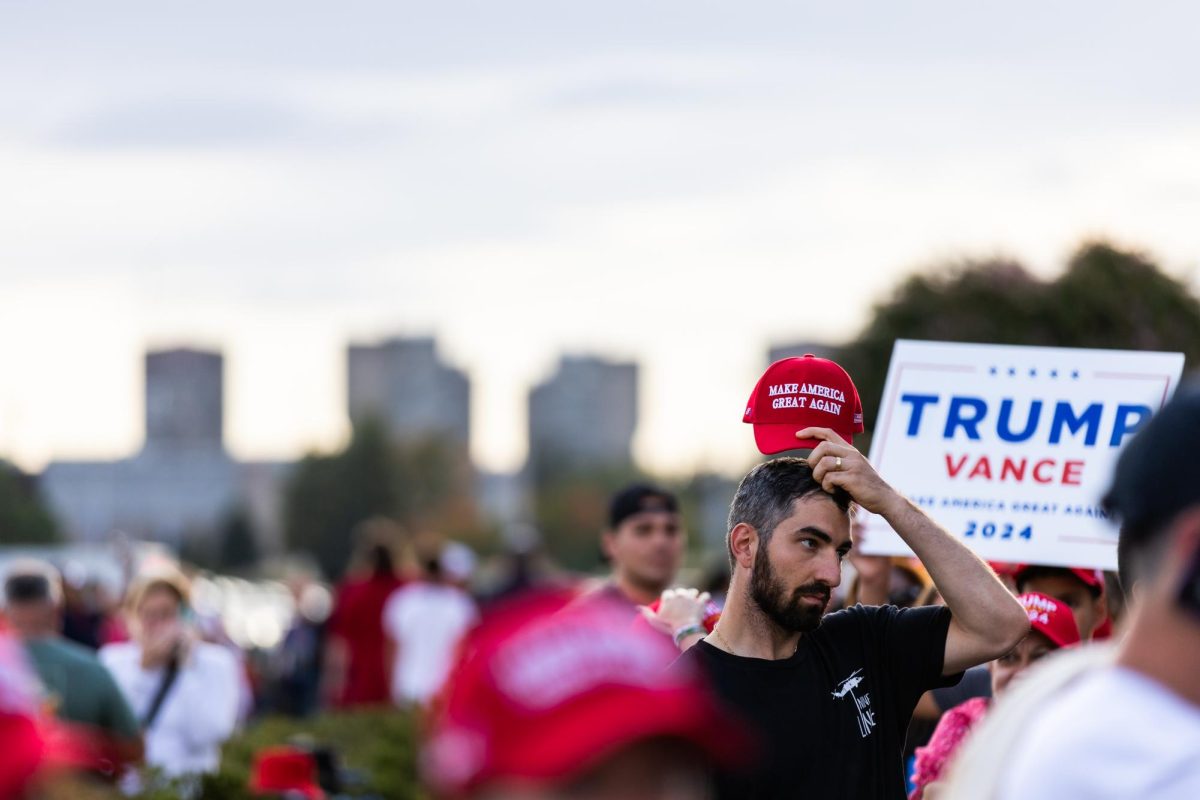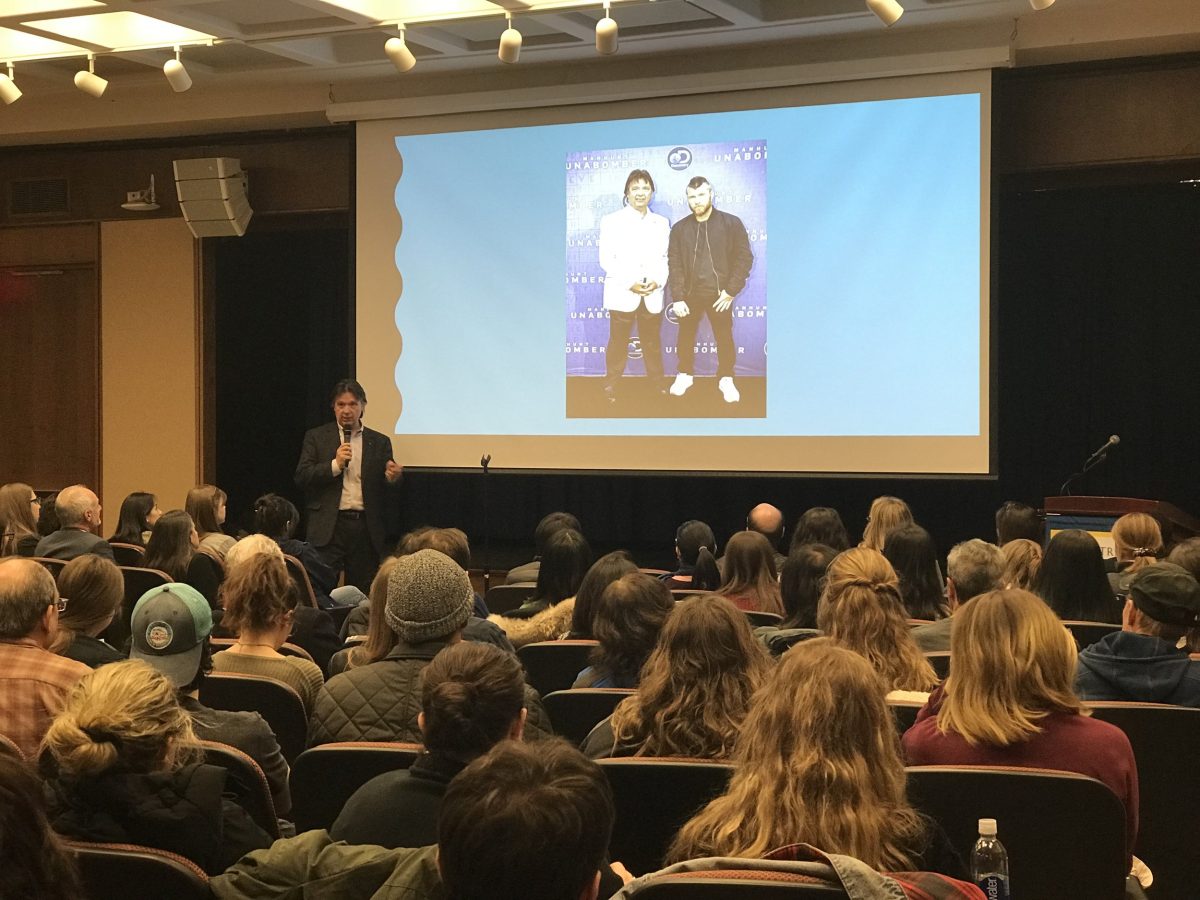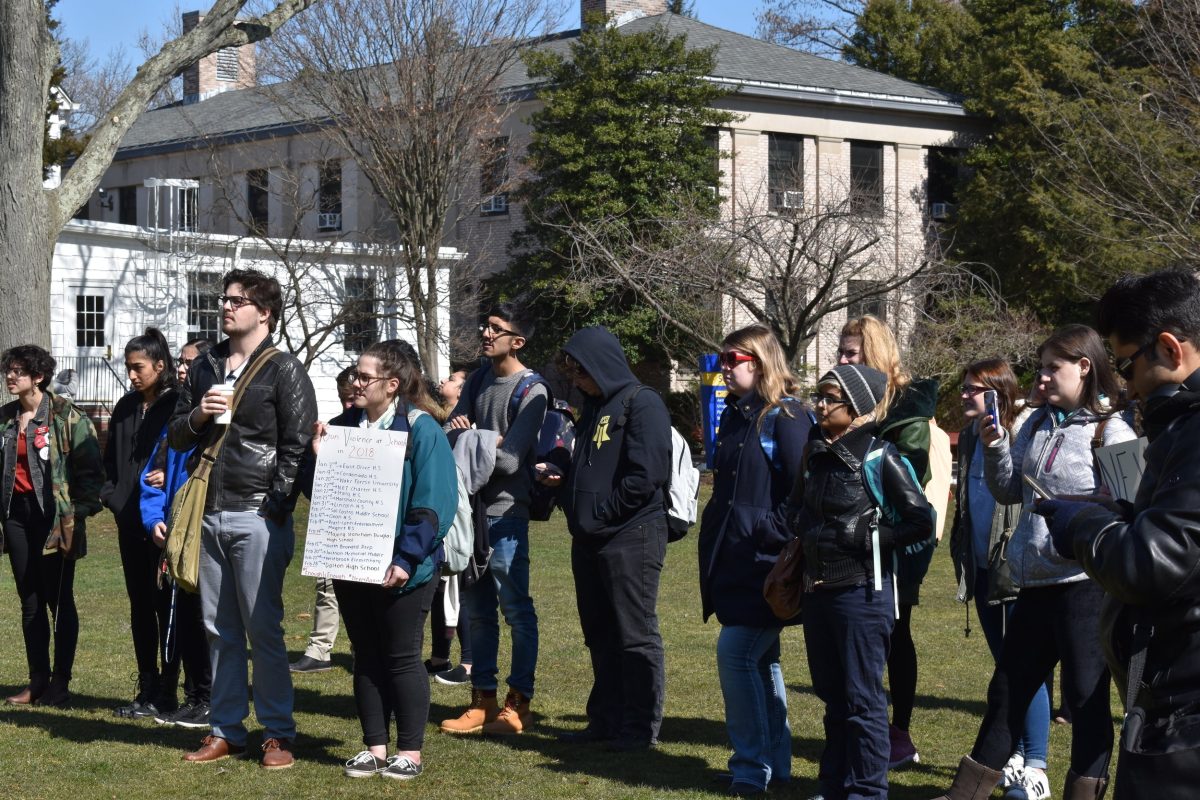By Bryan Menegus, Staff Writer
On October at 2:46am, I felt the greatest wave of relief of my adult life. My backpack and a manila envelope containing my wallet were returned to me, now bearing tags with my name and date of birth on them; I was let free to find my own way home in the damp chill of light rain. 2:46 was the time I was released from a holding cell at 1 Police Plaza (NYPD headquarters) where myself and several hundred other detainees had been carted off in the first wave of the over 700 arrests which occurred on the Brooklyn Bridge this weekend. My cell alone held 120.
Approximately eleven hours earlier, myself and over 1,000 protestors representing the Occupy Wall Street movement had started to march from their de facto home base of Zuccotti Park in lower Manhattan down the sidewalks of Broadway, flanked by motorcycle-mounted police officers. The park—which for the movement had served the functions of both hub and hostel for the previous fourteen days—had attracted mainstream media and lone videographers alike. Celebrities like Susan Sarandon, Michael Moore, Immortal Technique, and intellectual Cornell West came in person to speak, while Noam Chomsky made his thoughts known by video. As well, Zuccotti Park remains circumscribed by a 24-hour police presence—officers mainly from the outer boroughs working overtime. Wall Street proper, a few blocks south, is also on constant watch, littered with barricades, and has essentially become a militarized zone. The DCPI (Deputy Commissioner of Public Information) was unavailable for comment by phone or email, and was not willing to meet in person for an interview. All officers assigned to the protest are given standing orders not to speak to the media. “I’m not trying to be a jerk,” one officer confided, “I’ll get suspended if I give you a statement,” followed quickly by the words, “don’t write that down.”
The reasons protesters listed for their participation were just as varied as the personalities who made appearances. Some had come to demand accountability from bankers in regards to the global recession, bearing signs like ‘Where’s my bailout?’, as sentiment echoed by participating members of the Freedom Party and Grannies for Peace. Others were aggravated unions workers. Professional Staff Congress, USPS, and the Steelworkers have, among others, pledged their solidarity. Several members of the Steamfitters local 638 were in attendance on Saturday. “We’re here as private citizens,” one of them noted, declining to give his name or the names of his companions. When asked why they chose to march, a stocky, bearded Steamfitter sardonically noted, “Do you like the world you’re living in, baby?”
Sid Gurung, an economics major at Eugene Lang, came only to start a dialogue. “My main idea of participation in this was that the utter apathy in student communities, the lack of political participation. Not just voting—because voting, to me doesn’t count as political participation—it is actually going out and debating and grappling with the different issues we face,” he discoursed. “I saw a man being dragged by his feet on his hands, and when they dropped him his hands were covered in blood,” said Timothy Pool, whose participation stemmed from solidarity for his fellow citizens. “If I ever see someone peacefully expressing themselves attacked, I’m going to stand with the person who was attacked.”
Other protesters had more tangential causes: the Ron Paul sycophants, the 9/11 and Illuminati conspiracy theorists, Hari Krishnas, drifters, fringe radicals, and a few homeless people. And some people just want to get arrested—a belt notch and a badge of honor among pseudo-radicals.
The encampment at Zuccotti Park is stunningly efficient and compartmentalized: a generator powers a media center, and donations are routed to either the kitchen or the comfort center (which provides everything from clothes and bedding to razors and baby wipes), a communal library provides reading material, and a team of protesters—like Kyle Kneightinger—have volunteered as medics to treat injuries and manage sanitation. However, their purpose for being there, which has attracted no shortage of criticism, resembles an internet forum more than a traditional protest. Occupy Wall Street offers an outlet for the multivariate threads of frustration, in whatever form they manifest themselves.
But like a perverse walk across the red carpet, as the protest migrated down Broadway, waylaid pedestrians on either side of the street and tourists leaning out of double-decker buses clenched their cameras in anticipation; NYPD officers from T.A.R.U. (Tactical Assistance Research Unit) panned across the growing crowd with camcorders; protesters in motion snapped photos of themselves and their compatriots. “Can I take a picture of you?” a stout Korean woman in the march asked of a ragged and bepatched anarchist to her left. In the hearts and minds of New Yorkers, this moment in time was predetermined to be an historic one, and no one wanted to be without proof that they had been a witness. “All day, all week,” the protesters chanted, “occupy Wall Street!”
“Stay on the sidewalk,” officers demanded as the protest yawned left around City Hall Park towards Centre Street—the entry point of the Brooklyn Bridge Promenade, ostensibly the route this march was intended to take. The narrow pedestrian entrance bottlenecked the protesters, who spilled out into the street despite officers’ requests. At the entry to the Brooklyn Bridge’s roadway, approximately ten officers attempted to hold off the swell of bodies. One whiteshirt (an officer ranked as a Lieutenant or higher) read a written statement over a megaphone explaining blocking vehicular traffic as an arrestable offence; another officer about fifty feet back jeered, “S–t or get off the pot, you f—–g losers.” Over the din of drums and chants, the megaphone was barely audible past 100 feet.
The closest line of protesters linked arms and marched forward past the police and onto the roadway. Supporters leapt the fence between the promenade and road to rejoin the larger contingent of the march. An impromptu call-and-response rang out, “Whose bridge? Our bridge!” as they spread across all three Brooklyn-bound lanes. The East River came into visibility. Construction workers doing repairs on the roadways below let up a cheer.
“Keep marching!” shouted Bob Lyons, a teacher from Brooklyn who just moments before had described his reason for joining the march as, “the growing separation of wealth between rich and poor.” The wiry and graying man craned his neck to see why the crowd had stopped dead. “March! March!” the Manhattan side of the group called out, with no audible reply. From atop the girders of the bridge, it was obvious that police had arrived from Brooklyn and a second detachment was pushing its way up the road from Manhattan. Paddy wagons and police buses soon joined and officers unfurled orange netting to contain the protesters from both sides, prepared for mass arrests. It was nearly 5pm.
At first, demonstrators were being let out in a single file line. Orders were then modified: anyone on the bridge was to be arrested one at a time, ideally with five prisoners per A.O. (arresting officer), and taken en masse to the nearest available precinct.
“Hey handsome! Yeah, you. Come over here,” Officer Winski, a Manhattan-side whiteshirt at the edge of the orange netting barked, pointing to a tall, blonde-haired man in a red suit. Like the dozen or so people before him, he was immediately restrained with plasticuffs and led towards the nearest paddy wagon.
The first few caravans of prisoners were directed to 1 Police Plaza in Manhattan to be processed and checked for outstanding warrants. “So who’s here for Ron Paul,” asked a scraggly young man in my paddy wagon. Meanwhile, Officer Scheiber, who was driving us to headquarters, mumbled to himself, “Do you know how many weekends this is going to f*ck up? Do you know how many people were supposed to be eating dinner?” It took the NYPD several hours to clear the remainder of the protesters off the roadway, many of whom chose to sit and be dragged away rather than leave willingly.
At the time this article is being written, Occupy Wall Street is engaged in another march. According to Amanda Clarke, a senior at The New School, protesters number nearly 5,000, and have pushed their way onto Wall Street after walking back from Foley Square. “At least one person was pepper sprayed, the medics were treating her and the cops dragged her away so they couldn’t treat her,” she noted via text message. Videos are beginning to swamp social media sites, such as Twitter and Tumblr, of police officers using nightsticks on protesters and one officer bragging, “My little nightstick’s gonna get a workout tonight.” Pictures have confirmed the presence of the NYPD’s counterterrorism unit, and Anajali Mullany from the New York Daily News reports random pepper spraying into the crowd. Mullany also estimated the crowd to be somewhere between ten and twenty thousand strong, bolstered by a heavier union presence.
There are bad seeds amongst the police and protesters alike. Businesses around Zuccotti Park have noted vandalism and property destruction. Each time someone entered or exited the holding cell I was sequestered in Saturday, the detainees let up a self-aggrandizing round of applause. Likewise, there are those within the NYPD like Deputy Inspector Anthony Bologna, who gained notoriety for pepper spraying protesters who were already sufficiently contained on September 24. But by in large, this movement is acting and operating in a peaceful way, and the police are fulfilling their mission to serve and protect in the most prudent way available.
The larger movement of Occupy Together—which has sprung up protests in dozens of cities nationally and internationally—is still in its formative stages, and it will be a long and tiring road before (or if) they acquire the agency for the sweeping social changes they have alluded to. But for now they’re making themselves heard in the fits and starts of mass frustration and figuring out the words as they go: these are the politics of trying.

Photo from inside NYPD paddy wagon taken with cellular phone while handcuffed. Officer Louie stands outside the vehicle awaiting more detainees. (Bryan Menegus/The Chronicle)



